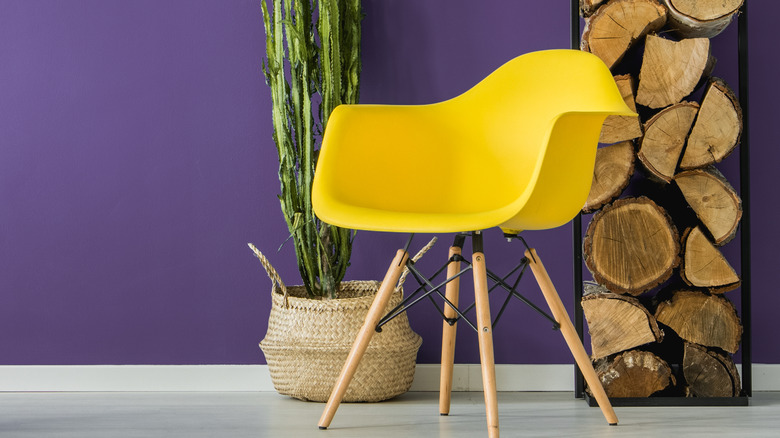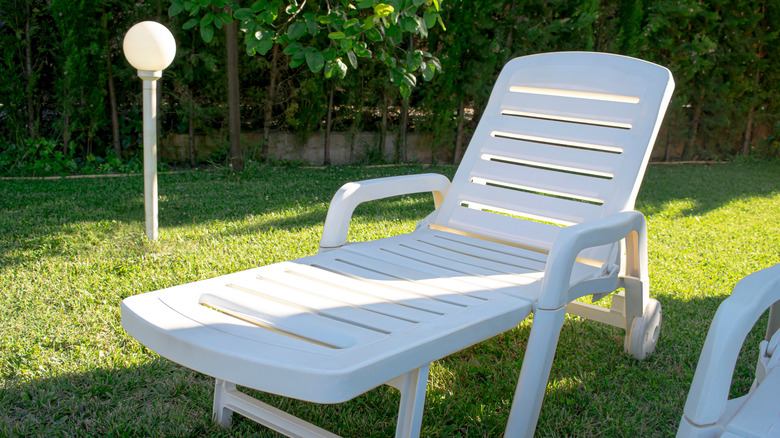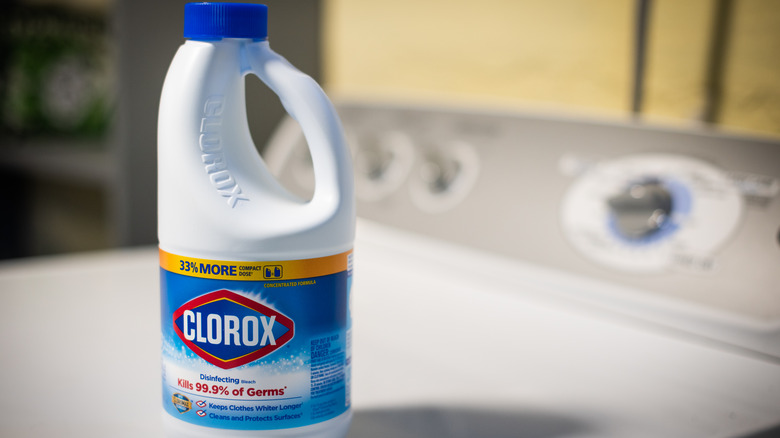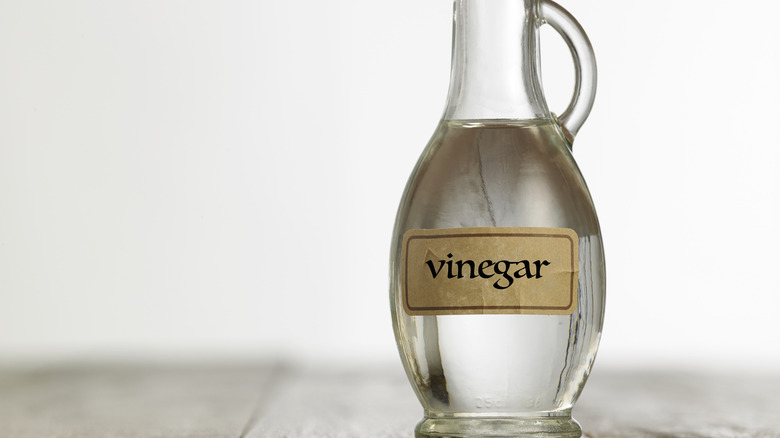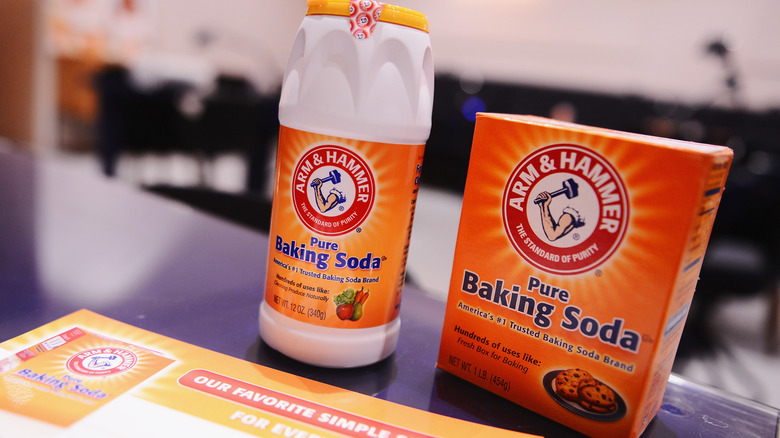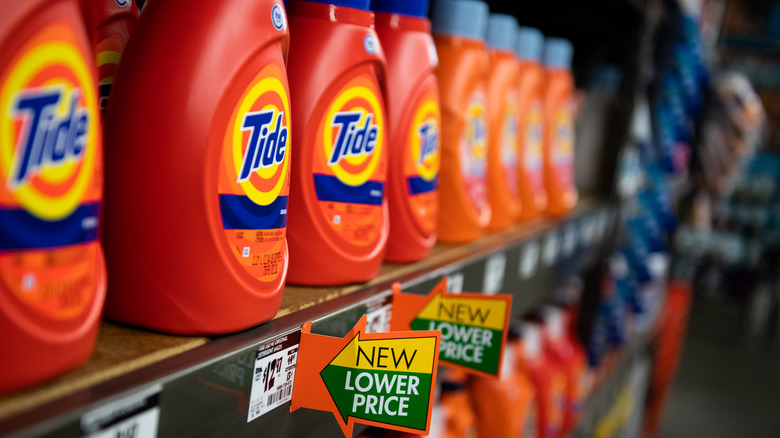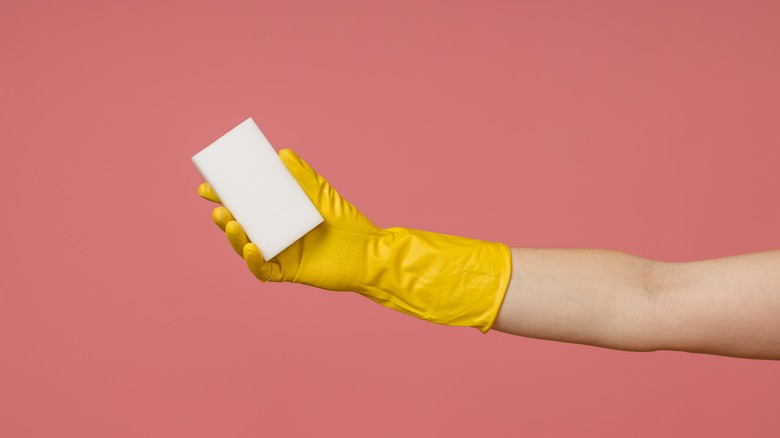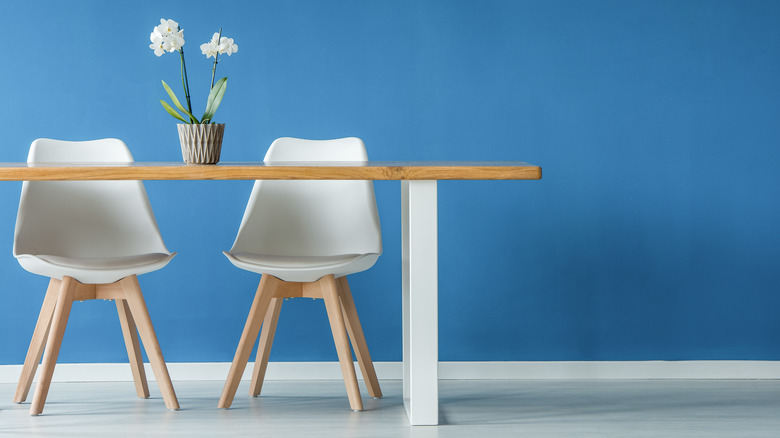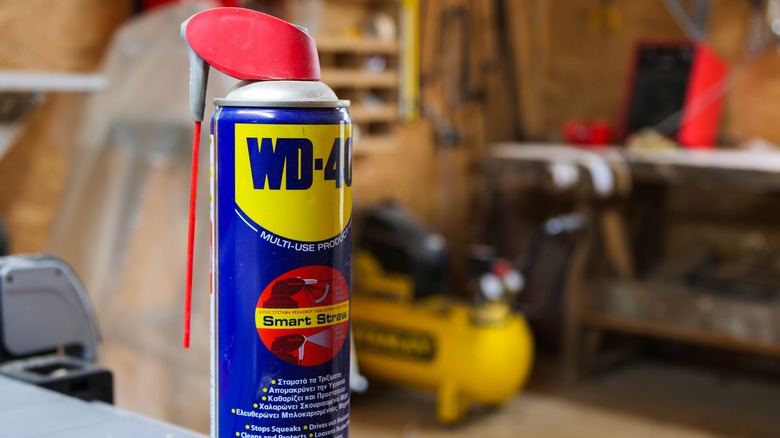8 Best Ways To Clean Plastic Furniture
Whether furnishing your home's interior or exterior, there are many options on the market in terms of appearance, colors, and materials. One very popular material for both areas is plastic. Plastic furniture is usually inexpensive when compared to its competitors like wood, metal, or fabric. There also tends to be a lot more variety in terms of colors and shapes since it's easier and cheaper to produce.
There are a host of other benefits to choosing plastic furniture, such as its weather and waterproof qualities, safety for children and pets, and durability when it comes to damage and natural wear and tear, explains By the Yard. One of the significant benefits of plastic furniture, especially for those with children and pets, is how easy it is to clean. When measured up against wood and fabric, plastic is an absolute breeze to clean. However, it isn't immune to damage, and if you want to keep your plastic furniture looking its best for as long as possible, you should know the proper ways to clean and maintain it.
1. Soap and water
Teak Warehouse notes, that most plastic furniture has either a shiny, glossy, or matte effect finish that protects the plastic underneath. This layer is somewhat sensitive, meaning overly harsh chemicals can wear it down and damage the appearance of your furniture. The easiest and gentlest way to clean your plastic furniture is simply with water. If you only need to remove surface dirt, simply take a damp microfiber cloth and wipe down your plastic furniture. With outdoor furniture, you can also simply hose off any surface dirt and debris with a garden hose set to a gentle setting.
If the dirt and debris are a little more stubborn, you can also use mild dish soap. Either mix some soap and warm water in a bucket and clean with a sponge or add soap directly to a damp cloth. Afterward, wipe down with a wet cloth to remove the soap and dry with a separate towel.
2. Bleach
Plastic tends to be more stain-resistant than other popular furniture materials. However, that doesn't mean it can't stain at all. Plastic lawn and outdoor furniture are especially susceptible to grass and mud stains that may require more than simple soap and water. Tips Bulletin recommends using bleach to get rid of more stubborn stains. This method works best on white furniture, as the bleach can damage the dyes in more colorful plastic furniture. For this method, you will first need to fill a bucket with hot water and stir in 1/4 cup of bleach. You can also add a couple of tablespoons of dish soap to the mixture.
Using a brush with gentle bristles or a sponge, apply the bleach solution to your furniture, gently scrubbing it in. Be sure to wear protective rubber gloves so you don't damage your skin. Let the bleach sit for a few minutes to penetrate the stains and disinfect your furniture. Use either a garden hose or a container of water and a clean cloth to wash the bleach off, and let it air dry.
3. White vinegar
For a less abrasive but equally effective way to clean your plastic furniture, you can opt for white vinegar, recommends Love to Know. White vinegar is great at removing stains and is much more gentle than bleach, as well as being all-natural. While it has a strong smell, it is still better for people with scent sensitivities than harsh chemicals.
As with bleach, this method works best for white furniture, however, it can be used for colored furniture, too. Be sure to spot-test it in advance. Begin by filling a bucket with hot water then add 1/4 cup white distilled vinegar. Wet down your furniture and remove any surface dirt and debris. Then, use a brush or sponge to scrub down the furniture with the vinegar solution. Rinse off the vinegar and repeat until clean, ending with a rinse of just water, and let the furniture air or sun dry.
4. Baking soda
Baking soda is another great, affordable, and common household cleaning agent that can remove built-up dirt and tough stains from your plastic furniture. Not only that, but it will also help deodorize your furniture, which can be difficult for materials like plastic that tend to trap scents. Backyardscape recommends this method for white furniture since baking soda is also known to be a lightning agent. However, you can spot-test colored plastic furniture if this method sounds appealing.
Begin by wetting down your furniture. Liberally sprinkle the baking soda over all the surfaces, and use a non-abrasive sponge or cleaning brush to scrub the baking soda into the furniture. Let the baking soda sit for at least five minutes to remove any dirt and odors from the plastic. Rinse off the baking soda with clean water, wipe away any residue with a dry cloth, and let it air dry.
5. Laundry detergent
If soap and water are ineffective, but you need a non-lightening method for colored furniture, you can also try laundry detergent, recommends Tips Bulletin. Laundry detergent contains a natural stain remover and will leave a pleasant scent in its wake. It's also gentle and won't damage or stain your furniture, although spot tests are always recommended.
Begin by combining 1 gallon of hot water with 1 tablespoon of laundry detergent (liquid or powder) in a large bucket. You can either leave the detergent mixture in the bucket or add it to a spray bottle for getting into hard-to-reach areas. Begin cleaning your furniture by generously spraying it down with the solution, or using a brush or sponge to apply it. Firmly but gently scrub your furniture, allowing the mixture to sit if the stains are more stubborn. Use either a hose or clean water and a cloth to clean off the detergent.
6. Melamine sponge
While plastic furniture is a very popular option for outdoor furnishing, if you have indoor plastic furniture that needs cleaning, but you don't have the outdoor space to hose it off, some of the previously mentioned methods can be difficult and messy. This is why Love to Know recommends melamine sponges.
The most popular type of melamine sponge on the market is the Mr. Clean Magic Eraser, but they all work the same. According to Family Handyman, melamine foam is essentially a very gentle abrasive that, when wet, becomes porous, simultaneously polishing out stains and absorbing the dirt. Begin by cleaning off your plastic furniture with clean water. If you have a hose, you can hose it off, but simply using a paper towel, cloth, or sponge dipped in water works. Then, wet your sponge to activate it, and firmly scrub your furniture down, paying extra attention to any stubborn stains.
7. Car wax
While other methods help your furniture look clean and smell fresh, they can also eventually wear down the surface coating, removing the furniture's original luster. Luckily, there are a few methods that MAKA recommends to restore your plastic furniture to its original glory.
One method they recommend is car wax. Be sure to buy a natural and non-abrasive wax, as synthetic or heavy-duty options can further damage and dull the appearance of your furniture. Any wax that's safe for the plastic on your car should be okay for your furniture. Begin with freshly cleaned and dried furniture. If you have outdoor furniture, consider bringing it inside to air dry so you don't accumulate any more debris. Using a microfiber cloth or wax pad, apply a thin coat of wax. Let the wax dry until it becomes a little hazy, and then buff it off with a clean, dry towel.
8. WD-40
Another method recommended by MAKA for restoring your plastic furniture to its original luster is using WD-40. You may be familiar with using this solvent for more mechanical projects, since it is, at its core, a lubricant and water displacer. Wired states, that it's mostly baby oil and petroleum jelly and can help add some shine back to your plastic furniture.
Before applying WD-40 to your furniture, make sure you have a well-ventilated area to apply it. According to The Filtery, it is both highly flammable and somewhat dangerous to inhale in closed-off areas. Ensure your furniture is clean and dry, then simply spray the lubricant onto a microfiber towel and rub it over the surfaces of your plastic furniture. Be sure to spot test in advance in case of an adverse reaction. Use a clean towel to remove any excess and let it dry thoroughly before the furniture's next use.
